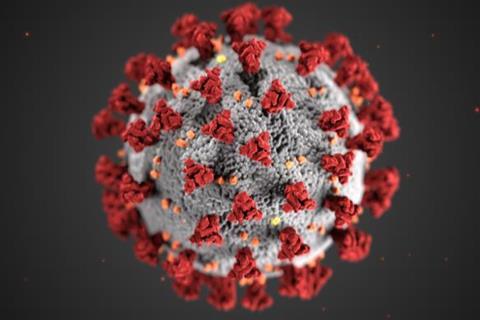Certain SARS-CoV-2 variants of concern are evolving to do a better job of shutting down human innate immune responses, according to new research from UCL and UCSF QBI.

The study, published in Cell, is the first to compare the ability of the most infectious COVID-19 variants to overcome humans’ innate immune system. It found that these variants are increasing the production of certain proteins, called Orf6, Nucleocapsid (N) and Orf9b, to overcome our first line of defence.
The researchers say that if these mechanisms are common to other coronaviruses, they may allow us to spot coronaviruses with pandemic potential.
Immune systems
The human immune system is formed of two parts, the innate and adaptive immune systems. Innate immunity is present from birth and acts as the first line of defence, responding rapidly to infection to try to prevent it spreading. Adaptive immunity develops as we live our lives, learning from past infections so that it can recognise pathogens in future.
Most COVID-19 research to date has been focused on the evolution of the spike gene, the part of the virus that allows it to enter host cells. The spike has been targeted by successive iterations of SARS-CoV-2 vaccines, which train our adaptive immune system to recognise the virus and protect against disease. People also gain some natural immunity that develops after being infected.
As a result, the virus has evolved to evade our immunity over and over, resulting in new variants of concern that are sufficiently different from previous variants to slip past our adaptive immunity.
Variants of concern
In this study, researchers at UCL and UCSF QBI collected and sequenced host and viral RNA to measure host response to SARS-CoV-2 infection. They included the major variants of concern (VOCs) Alpha, Beta, Gamma, Delta and the four Omicron subvariants BA.1, BA.2, BA.4 and BA.5.
Analysis of the data highlighted that these variants evolved to produce higher quantities of specific proteins, called Orf6, Nucleocapsid (N) and Orf9b, that suppress the innate immune system.
Dr Ann-Kathrin Reuschl (UCL Division of Infection & Immunity), a first author of the study, said: “We expect viruses to evolve their protein sequences to make them perform better in humans, which is what is happening in the spike gene. But for N, Orf6 and Orf9b, the important changes appear to be to enhanced expression of the protein, essentially producing more of it to batter down the walls of our innate immune system.”
Similar strategies
The authors also found that the different VOCs, which all evolved independently from the first wave virus, adopted similar strategies to overcome human innate immunity by increasing production of the same proteins.
Professor Greg Towers (UCL Division of Infection & Immunity), a senior author of the study, said: “This work is important because it reveals how SARS-CoV-2 is managing the first line of our immune defences, which the virus needs to overcome to infect humans in the first place.
“We aren’t sure if these biological mechanisms are common to other coronaviruses, but if they are it allows us to spot other coronaviruses that have pandemic potential. We will want to keep a close eye on those viruses that can manage our innate immunity well.”







No comments yet